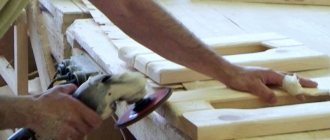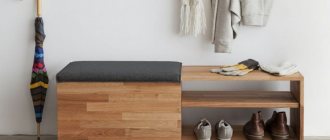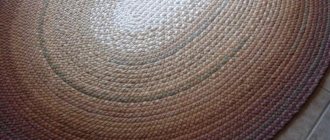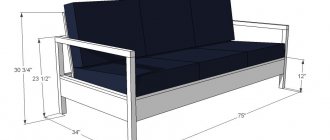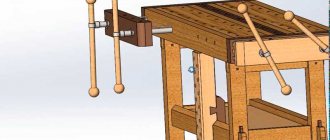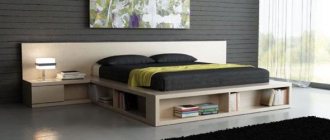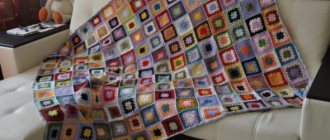Square motifs
A crocheted square blanket can be found in every grandmother’s house. They are very light, but homey and cozy. In addition, it is simple, especially if knitted in a patchwork or checkerboard pattern.
Grandmother's Square
Classic chunky knit blanket. It was called that because our grandmothers often used this technology.
You can use the classic scheme. Typically, different colors are used for each row.
By the way, granny's square is a free technology and does not require strict adherence to dimensions.
But the square is a detail for the blanket. They must also be connected so that they do not fall apart. For joining, it is better to use a flat seam, almost invisible to the touch, but it will be noticeable against the background of the flaps.
Proceed like this:
- You will need a thread of a contrasting color. For example, if there is no white blanket in the blanket, take it. You also need a hook and identical squares.
- You can start stitching from any corner. Insert the thread into the outermost loop in the bottom wall and pull it out.
- Grab the edge of the corner of the right square, hook the connecting thread and pull out the loop.
- Pull it through the first one. Then just repeat the above process many times and you will get a neat seam.
The result is a neat contrast seam, which is practically not felt to the touch, but stands out clearly.
Simple square
The simple square itself is even more primitive than grandma’s. In this picture you can see its diagram and it is made only of columns with a cape and empty loops.
This is a good start for beginners, but if you combine a simple “grandmother’s” square in a blanket, you get a very interesting combination. By the way, you can weave a blanket from plush yarn that will warm you up on a cold winter evening.
Benefits of self-knitted curtains
There is a widespread belief among housewives that knitted curtains for the kitchen are impractical, that they absorb grease from cooking and require constant care. But at the same time, they ignore how unique such canvases look on the windows. Even if crocheting is not your thing, then if you want, finding such curtains in a special store is not a problem. And for a unique interior, you can order a personal version.
To make your own knitted curtains for a nursery you will need to spend a lot of time, but this is the cheapest and most practical option. Moreover, if you do not know the technology, you will have to study it. But the advantages of this are obvious:
- Cheap, you just need to spend money on materials;
- Uniqueness, since you choose the design yourself;
- Possibility to weave a curtain from high-quality threads chosen independently.
Diagonal braids
For voluminous blankets, the technology with braids is suitable. The blanket turns out to be light, soft, and does not press. They can cover a sofa or armchair.
It is often decorated with ruffles or knitted roses. You can learn more about weaving from the video.
Cape made of knitted squares
Any housewife can create a blanket for the sofa with her own hands - the abundance of patterns and patterns allows you to choose an option suitable for both a beginner and an experienced knitter. So, for example, if your hobby is crocheting, try crocheting a blanket from squares.
Pattern for knitting a blanket from squares
This method is also convenient for beginner knitters, since it does not require special skills - squares can be knitted in any way and will be an excellent training for mastering more complex styles, descriptions of which are quite easy to find. In addition, for squares you can use leftover yarn of different colors - in this way you can even create several bedspreads in the patchwork style, which will decorate a child’s room or country house, and will also fit perfectly into an interior in a loft or pop art style.
Pop art bedspread
Art Nouveau bedspread
Patchwork bedspread
Bright and cheerful children's blanket
Many novice craftswomen are intimidated by the amount of work: indeed, a sofa cover that should cover it completely, or a bedspread that hangs from the bed almost to the floor should be large in size. For example, for a double bed, a knitted blanket will be approximately 220 cm wide and about 240 cm long, and for a corner sofa - even a little more. But it’s not at all necessary to rush to meet the deadline in a week. Spending only an hour and a half a day knitting, while watching an evening TV series, in just a couple of months you will receive a wonderful blanket that will delight the whole family for several years. And having coped with such a voluminous work, you will easily master any, even the most complex, pattern in the future.
Strip
Anyone can knit this blanket with their own hands, because it is not necessary to meticulously follow the instructions and count the rows. The instructions themselves look like this:
- First, make a chain the length of a blanket or a little shorter. Subsequently, the ligature will stretch slightly.
- Now you need to pull out a long loop and pull out the hook at the end.
- One strip is ready! All that remains is to take threads of a different color and start the process over.
Now it's time to knit:
- 1 row. Pillar with one cape.
- Row 2, as well as all even ones. Column without cape.
- Row 3 and odd. 2 columns with capes in each arch.
Knitting methods
One-piece patterns for a blanket
There is an incredibly wide variety of blanket crochet styles and patterns. All solid patterns are conventionally divided into:
- simple;
- openwork;
- mesh;
- shells;
- dense;
- embossed.
Even the simplest of them on blankets look original.
Motif plaid
Patterns with motifs are very popular and loved by needlewomen, regardless of age. This is partly due to the wide variety of attractive and original motifs:
- simple;
- round;
- triangular;
- hexagonal;
- openwork;
- Irish lace;
- floral.
Zigzag plaids
A very simple and interesting blanket that can also be knitted freely. Sizes are selected individually during the knitting process.
Basic elements: columns with 1 and 2 crochets. And if you have the skills to work with a crochet hook, you will spend no more than an evening on it. Work according to this scheme.
Abbreviations in knitting patterns in master classes
To be able to read crochet pattern patterns, you need to know the common abbreviations they use:
| Air loop | VP |
| Single crochet | RLS |
| Connecting post | SS |
| Double crochet | CCH |
| Double crochet stitch with 2 or more crochets | СС2Н (the figure depends on the number of yarn overs 2,3,4) |
| Facial (front) relief column | PRS |
| Purl (back) relief stitch | ZPRS |
| 2 columns with a common top | 2SSOV |
| 3 stitches in 1 loop | 3СНВ1П |
| Lift loop | PP |
| Half double crochet | PSSN |
There are also symbols with which pattern diagrams are drawn up. In more complex patterns, which are used only by professionals, there are other symbols and abbreviations. It is enough for beginning needlewomen to know only the basic elements.
Waffle pattern for a blanket
An interesting crocheted children's blanket that our grandmothers knitted with thick threads. Very soft with a classic checkered pattern. It is easy to knit if you follow the instructions.
And for beginners, here is the action plan:
- The first row has regular double crochets.
- In the second there is a column with 1 crochet, and then 2 embossed ones with a cape.
- In the third - double crochet and embossed.
How to crochet a baby blanket
Not only adults, but also our children need a bedspread. Several models from our readers.
Crochet blanket for newborn
Blanket for a newborn's discharge from the hospital! Beautiful, comfortable and practical thing! Knitted from 100% cotton BEGONIA, crochet number 2. The base of the blanket is a “granny square”. Colored inserts can be placed at your discretion! As a decoration I used a satin ribbon and
Crochet baby blanket
To knit a baby blanket you will need: 300 g of white-lilac-green melange acrylic yarn, 100 g of white yarn and 4 m of satin ribbon 2 cm wide. Hook No. 3.5. Lush stitch, embossed (lush stitch, relief): *grab the thread, insert
Knitted blanket with waffle pattern
My granddaughter was born, and I decided to knit a blanket for her as a gift. Here's what I got. I looked for the drawing on the Internet. And I liked this one. The waffle pattern blanket is knitted from very soft and fluffy yarn.
Baby blanket Rainbow, crocheted
Children's blanket "Rainbow". The work requires pens, yarn and a hook. Blanket size 90cmx105cm. Crocheted No. 3. It took 4+2+3 =7 skeins (green, yellow, orange) Jeans YarnArt yarn used 55% cotton, 45% polyacrylic + white Baby used
Crochet pattern for a blanket Creme Brulee
Before knitting a blanket for children, choose the appropriate yarn. “Creme Brulee” is a very “soft” pattern, so the yarn must be appropriate. Threads consisting of cotton and acrylic in half are suitable. For a 1.2x1.2 blanket you will need about 10 skeins. To work, take the 3rd hook.
Here is a diagram of the main part of the bedspread. The border is knitted this way.
Bedspread from “Granny Squares”
The size of this bedspread is 90x115 cm.
To work you will need a No. 8 hook and thick worsted yarn:
| Color | Quantity | Designation in the master class |
| Beige | 400 g | A |
| Dark lilac pink | 150 g | IN |
| Lilac-pink light | 250 g | WITH |
Basic elements of the bedspread
First you need to knit 10 identical squares measuring 18x18 cm. All elements are knitted in the round without turning the fabric to move to the next row.
Algorithm for performing the work:
- Cast on a chain of 4 VPs with thread C, connect into a ring using SS.
- 1 R: 3 VP (count as 1 C1H), 2 C1H in the ring. Next, perform rapport 2 times *1 VP, 3 C1H in the ring*, 1 VP. Connect the first group of 3 VPs using a SS.
- 2 R: attach thread B, 3 VP (count as 1 C1H), perform in the same place (2 C1H, 2 VP, 3 C1H) - this is the beginning of the angle. 1 VP *in the next chain of air loops make 1 VP, 3 C1H, 2 VP, 3 C1H; 1 VP* 2 more times (for each corner of the square). Connect the beginning and end of the row using a SS in the VP of the first column of 3 VPs.
- 3 R: attach thread A between two VPs, perform 3 VP, 2 C1H, 2 VP, 3 C1H in the same jumper.
Crocheted sofa blanket from granny squares
- Next, repeat the rapport 2 times * 1 VP, 3 С1Н (in the next jumper of 1 VP), 1 VP, 3 С1Н, 2 VP, 3 С1Н in the next corner jumper from the group of 2 VP*. 1 VP, 3 C1H. in the next jumper of 1 VP, 1 VP, attach to the corner using a VP to the beginning of a group of 3 VPs. The thread is not fastened, the loops are connected to the next jumper of the corner from 2 VP.
- 4-6 R: repeat the 3rd R, perform 1 additional pattern (1 VP, 3 C1H) on each side of the square. Additions are made in each new row.
- Fasten the thread, hide the remaining ends of the yarn.
Assembling squares
You need to sew 6 ready-made motifs. To do this, take 2 parts and place them face to face. You can sew the squares together with a large needle or crochet using connecting posts.
Attention! When sewing, you need to carefully select the loops so that the pattern does not move out.
After stitching, you should end up with a rectangle measuring 3x2 squares.
Harness
After connecting 6 squares, they are tied:
- 1 R: attach working thread B to SS in any jumper from 2 VP of the outer corner of the rectangle. Here, perform 2 С1Н, 3 VP, 3 С1Н.
- Next, they knit a rapport *in the jumpers from 1 VP they make 1 VP, 3 C1H, 1 VP, and in the corner jumpers from 2 VP they make 3 C1H, 2 VP, 3 C1H * until the end of the row, except for the last element of the pattern. Finish the circle with 1 VP, 3 C1H, 1 VP in a jumper of 1 VP, perform a SS in the first loop of the row.
- 2-7 R: make 2 VP for lifting, repeat pattern 1 R. 2-3 R are knitted with thread B, 4-7 R with thread A. At the end of the work, you need to fasten and cut the thread.
Main border
The border is knitted according to the same pattern separately for 4 sides of the bedspread:
- 1 R: attach thread B to the jumper of the corner from 2 VP. Knit 3 VP, 1 C1H into the same jumper. Further to the corner, knit a repeat pattern *1 VP, 3 C1H into a jumper of 2 VP*. 3 C1H, 4 VP are performed in the corner jumper. Turn the work over and start knitting the 2nd row.
- 2 R: make 3 C1H in a jumper from 1 VP. Next, rapport to the end of the row *1 VP, 3 C1H into a jumper from 1 VP*. In the last jumper of 3 VPs, knit 1 VP, 1 C1H. Do 3 VPs to lift to the next row.
- 3 R: perform 2 C1H in a jumper from 1 VP. Next, rapport to the end of the row *1 VP, 3 C1H in jumpers from 1 VP*. At the end, make 1 VP, 1 C1H into a jumper from 3 VP of the last row. The thread is secured and cut.
- 4-5 R: attach thread C. Repeat the pattern 1-2 R. The thread is secured and cut.
- 6-11 R: attach thread B. Repeat the pattern 1-2 R one by one. The thread is secured and cut.
When all 4 sides are knitted, sew the remaining 4 squares in the corners. You need to make sure that the loops at the joints match.
Processing the edges of the bedspread
A knitted blanket for a sofa is crocheted on all sides. The border is knitted in the round.
Strapping algorithm:
- 1 R: attach thread C to the corner of the blanket between 2 VPs. Perform 3 VP, 2 C1H, 2 VP, 3 C1H. Next, rapport along the edge * 1 VP, 3 C1H into a jumper from 1 VP * to the next corner from 2 VP. In it, knit rapport 3 times *1 VP, 3 C1H, 2 VP, 2 C1H*. By analogy, the remaining 3 sides of the rectangle are tied. Finish row 1 ch, then make a sl st to the corner of 3 ch.
- 2 R: make 2 VP for lifting to the next row, repeat 1 R. The thread is secured, cut and the end is hidden.
- 3-4 R: repeat rows 1-2 with thread B.
At the end you need to fasten the thread and hide its end in the base of the bedspread.
Children's crocheted blanket from motifs
An interesting baby blanket that requires medium-thick acrylic yarn, a third hook and a satin ribbon for the border.
Note!
DIY hanger: master class on creating original homemade hangersHow to clean silver: TOP most effective methods
- Türkiye. What season is best to visit?
Next, follow the instructions:
- First you need to sew 35 motifs using this pattern.
- The first row of each motif must be knitted with white thread.
- The second in any other color. For example, aquamarine, as in the example.
- Row 3-4 is white again, and row 5-6 is aquamarine.
All that remains is to connect the motifs together and sew on the border with a satin ribbon. This is a very interesting blanket for newborns and infants, but then take cotton yarn.
Selection of yarn and knitting tools
After the bedspread model and thread type have been selected, it is necessary to select the correct amount of yarn and hook thickness.
Before knitting a blanket, be sure to take into account the following criteria:
- Knitting method. Since the bedspread is quite large, it is advisable to choose simple types of knitting to create it. For example, Canadian elastic, the main features of which are convenient loop counting and simple correction of possible errors.
You can also use garter stitch, the edges must be tied in a different way so that they do not curl.
- Number of loops. In order to calculate the required number of loops for the model, you will need to knit a small (20x20 cm) sample with the selected pattern. Then measure it in centimeters and calculate the full size of the bedspread. It is important to slightly increase the final result, since most types of threads are prone to shrinkage.
Calculating the number of loops by analogy with knitting
- Match the pattern and thickness of the threads. For complex patterns, thin yarn is most suitable, for simple ones - thick. For large products, it is advisable to choose a simpler pattern, since complex patterns can negatively affect its shape.
- Duration of the work. The thinner the yarn and the more complex the pattern, the longer the work will take. Experienced craftswomen can complete a blanket knitted from medium threads in about 5-6 days, while for some with thick yarn, 2 hours is enough. For beginners, this process will take much longer.
- Season. For the cold season, it is recommended to use types of yarn that can retain heat, for the warm season - thinner threads.
- Age. Bedspreads for adults can be knitted from any yarn; for children, it is advisable to choose natural, soft and hypoallergenic threads.
Calculating the amount of yarn when knitting can be taken as an example for a similar calculation when crocheting.
If you still have little experience in the field of knitting, then for knitting a bedspread it is recommended to choose yarn of medium thickness and a simple pattern.
Yarn calculation depends not only on the thickness of the threads, but also on the size of the bed. You can find out how much yarn you need from a consultant in the store, calculate it using an online calculator, or use the ready-made calculations of experienced needlewomen.
How much yarn you need depends on several parameters:
- bedspread sizes;
- yarn composition;
- selected pattern;
- the weight of the skein and the length of the threads in it.
Approximate calculation for a bedspread for a children's bed:
| Pattern | Bedspread size (m) | Yarn composition | Skein parameters (m/g) | Flow (m) |
| Aranas and openwork | 1x1.5 | Acrylic 40%, cotton 60% | 150/50 | 1700 |
| Shadow surface | 1.22x1.53 | Polyacrylic 45%, cotton 55% | 300/100 | 1000 |
| Individual elements | 1.1x1.1 | Cotton 100% | 400/100 | 1800 |
| Simple motives No. 1 | 0.95x0.95 | Polyacrylic 45%, cotton 55% | 320/100 | 0,96 |
| №2 | 0.88x0.88 | Acrylic 100% | 200/50 | 0,175 |
A knitted bedspread, which is more convenient to crochet than knitting, is made in a large size.
The parameters are calculated as follows:
- for a single bed (1.5x2 m) – 1.5-2 kg;
- for a double standard (1.8x2m) – 2-2.5 kg;
- for a double euro (2x2.2 m) - 3 kg or more, depending on the thickness of the thread.
Experienced needlewomen advise taking yarn with a small margin, taking into account the shrinkage of the finished product.
Which hook to use for knitting a bedspread directly depends on the thickness of the chosen thread.
| Thread type | Hook number, mm |
| Very thin (cotton) | 0,6-1,0 |
| Any thin | 1,25-1,75 |
| Average | 2,00-3,5 |
| Medium with double thread | 4,00-5,00 |
| Fluffy doubles | 5,50-6,00 |
| Wool doubles | 7,00-8,00 |
| Thick twisted | 9.00-1 cm |
If you choose a hook that does not match the thickness of the yarn, the pattern will tighten, which will negatively affect the shape of the product.

